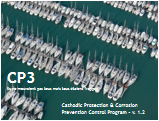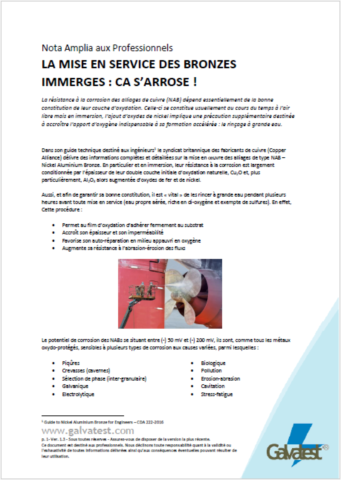Services
Online support
Galvatest delivers online support for all its products through e-mail or incoming phone call.
Investigations, diagnosis and trials
- Inquiries aim to identify the cause of a technical failure and to propose an adequate solution. A visit on the spot is necessary to perform analyses and/or sampling, on board or in the vicinity of the concerned boat afloat, and - if possible - at the occurrence conditions. They result in an investigation report whose purpose is not to establish responsibilities but identify and suggest an explanation for the development of the investigated matter.
- Diagnosis are conducted through appropriate paper work (queries, photographs, measurements...) to identify the likely cause of a problem. Galvatest offers boaters with on site or remote diagnosis services paid on an hourly basis.
- Trials conducted on behalf of coating systems producers aim to establish harmlessness of products toward corrosion potential of protected metals, under mentionned coating specifications.
Special deliveries
Galvatest also offers performing laboratory's electrodes at competitive price to technical centers and research laboratories. Contact...
What certification bodies say...
2.9 Cathodic protection of aluminum lower units…
2.9.1 …a negative potential of over 1200 mV can cause harmful overprotection…
2.9.2 …Cathodic protection supplied by the drive manufacturer may not be sufficient…
2.12 Hull potential monitor
2.12.1 All metal hull vessels utilizing shore power shall have an installed hull potential meter and reference electrode.
Hull potential meters shall be considered for other metal hull vessels that remain in the water for extended periods.
![]() DNV (Det Norske Veritas) - Recommended practice DNV-RP-B401 - General cathodic protection design considerations
DNV (Det Norske Veritas) - Recommended practice DNV-RP-B401 - General cathodic protection design considerations
5.4 Protective potentials
5.4.1 A potential of (-) 0.80 V relative to the Ag/AgCl reference electrode is generally accepted as the design protective potential () for carbon and low-alloy steels*…
![]() Bureau Veritas - Guidance note NI 423 DT R01 E - Cathodic protection…
Bureau Veritas - Guidance note NI 423 DT R01 E - Cathodic protection…
2.1 Protection potential
2.1.1 Cathodic protection is effective if the reaction of oxidation of iron is not possible.
2.1.2 The purpose of [2.1.1] is achieved when the steel electrode potential is lowered below the protection potential of (−) 800 mV versus Ag/AgCl sea water reference electrode, which can be considered as a protection criterion*.
![]() Lloyd's Register - Notice n°2 - Rules for the manufacture, testing and certification...
Lloyd's Register - Notice n°2 - Rules for the manufacture, testing and certification...
4.1.5 The cathodic protection system is to be capable of polarising the steel structure to potentials measured with respect to a silver/silver chloride/seawater (Ag/AgCl) reference electrode to within the range -0.80 to -1.20 volts for open seawater conditions. An average potential range from -0.90 to -0.95 volts vs. Ag/AgCl may be considered ideal.
4.1.6 Potentials more negative than -1.20 volts vs. Ag/AgCI must be avoided in order to minimise any damage to the coating system
* This potential is (-) 900 mV for aluminium (EN).


